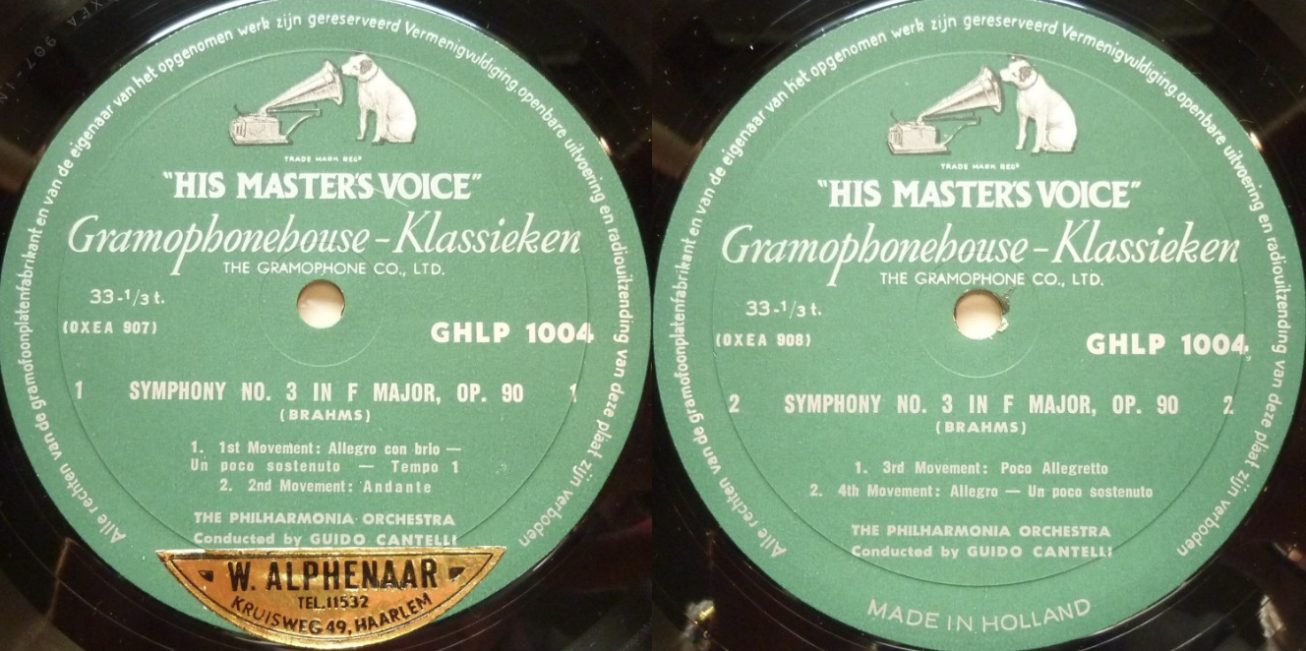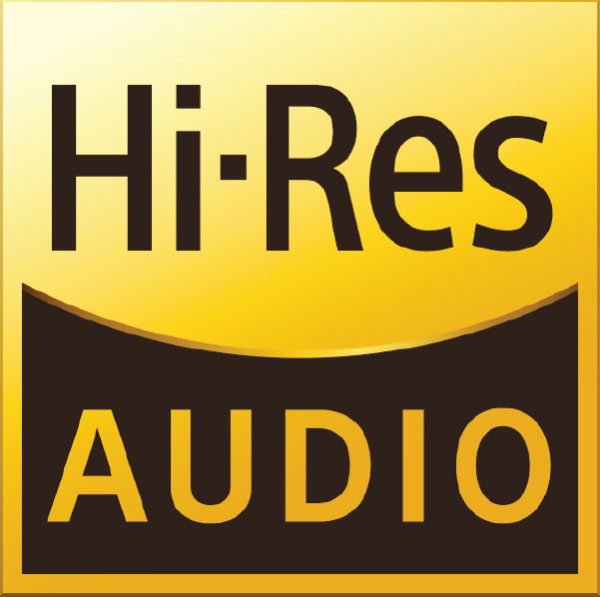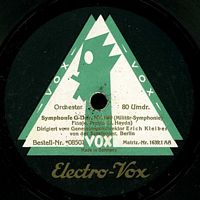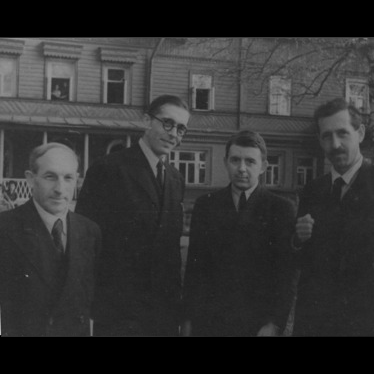Étiquette : Philharmonia Orchestra
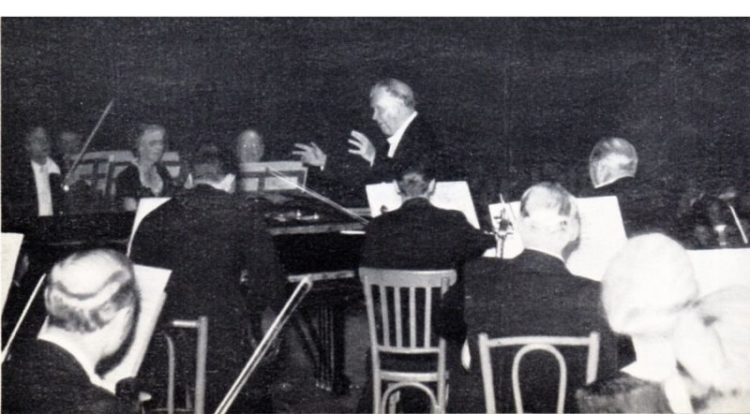
Edwin Fischer – Philharmonia Orchestra
Beethoven Concerto n°4 Op.58
London Abbey Road Studio n°1 – 4,9 & 14 Mai 1954
Prod: Walter Legge & Walter Jellinek – Eng: Douglas Larter
Source 33t/LP: RLS 2900013 ‘HMV Treasury’
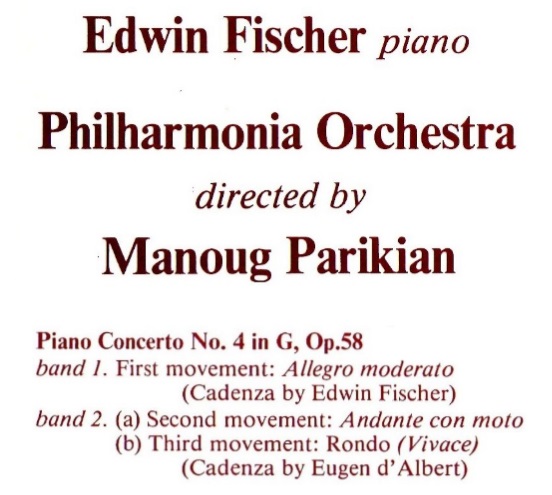
Entre le 3 et le 20 mai 1954, Edwin Fischer a entrepris une importante série d’enregistrements à Londres, dont trois Concertos avec le Philharmonia Orchestra.
Cette année là, du fait de difficultés qui ont surgi avec les musiciens suisses, le Comité d’organisation des Luzerner Festwochen a du renoncer aux services de l’Orchestre Suisse du Festival, et il a été annoncé en janvier 1954 que ce serait le Philharmonia Orchestra qui assurerait tous les concerts des Semaines Musicales de Lucerne (article de René Klopfenstein dans ‘La Liberté’ du 9 janvier 1954).
Suite à ce prestigieux engagement, l’Ambassadeur de Suisse à Londres, Henry de Torrenté, organisa le 5 mai au Goldsmith’s Hall un concert de gala consacré à des œuvres de Bach et de Mozart auquel étaient conviés en présence de nombreux officiels Edwin Fischer et le Philharmonia Orchestra ainsi que la violoniste suisse Marie-Madeleine Tschachtli.
Et plus tard, le 18 août, Fischer a dirigé le Philharmonia Orchestra pour le 5ème concert symphonique du Festival avec au programme le Concerto Brandebourgeois n°2 de Bach, le Concerto n°22 K.482 de Mozart et le Triple Concerto Op.56 de Beethoven (avec Schneiderhan et Mainardi). La ‘masterclass’ de Fischer a débuté le lendemain du concert, après une réception informelle organisée par Walter Strebi, au cours de laquelle Fischer a joué la sonate ‘Waldstein’.
Dans ‘L’Impartial’ du 20 août, est paru un long article du critique Jean-Marie Nussbaum qui relate son expérience d’une des répétitions de Fischer: ‘Je sors d’une répétition du concert Edwin Fischer – Orchestre Philharmonia de Londres. Rien de plus agréable que d’assister à une telle séance de travail. Les exécutants, sanglés le soir dans leur habit et leur respectabilité jouent ici en manches de chemise, affalés sur leur chaise en des positions fort peu académiques. Ce vaste gentleman ventripotent et moustachu taquine du mouchoir sa contrebasse empoussiérée. Bref, on est à l’aise…
Dans la salle, quatre ou cinq langues, ou plus. Il y a un nombre inusité de «techniciens » de la musique. Voici le violoncelliste français Pierre Fournier, suprêmement distingué et qui sait jouer avec art, et son accompagnatrice Reine Gianoli, au cheveu plat comme l’imagination d’un caricaturiste romand. Et d’autres, que naturellement nous ne connaissons pas.
Fischer, ce grand pianiste suisse, est déjà au milieu de ses « poulains ». Tête de lion beethovénien posée pile sur un corps râblé et court sur pattes de petit bourgeois argovien, il serre des mains à droite, à gauche, et hop! Il tape dans ses mains au-dessus de sa tête pour attirer l’attention, étend les bras et… c’est !a prodigieuse entrée du Deuxième Brandebourgeois qui se fait entendre, puis une série de pages (car on ne joue pas tout) de ce luxuriant et baroque concerto, où font merveille le violon, la flûte, le hautbois, la trompette et le clavecin du « Philharmonia ». Quelle distance entre ce jeu et celui de Cortot (qui a dirigé les Brandebourgeois à Paris)! Comme le second est dix-huitième, fulgurant, libre, et Fischer romantique! Et que tous les deux sont beaux, cependant…
Arrêt: on s’explique mi en anglais, mi en allemand. Fischer court de-ci de-là griffonner quelques indications dans les partitions. Éclat de rire: le bon chef suisse a dû faire un «witz»… Et on repart…On va jouer l’un des plus beaux Concertos pour piano et orchestre de Mozart, celui en mi, grâce auquel, avec celui en ré, nous avons été converti à la religion mozartienne à laquelle jamais nous ne serons infidèle. Fischer joue la partie de piano et dirige en même temps. Le petit homme bondit de son instrument comme un diable de sa boite pour indiquer une entrée, une inflexion, une tendresse. Puis retombe sur le clavier, et la merveilleuse rêverie recommence…
— Ah! mais cette pédale.. . Il y met trop de pédale, s’exclame derrière moi un auditeur barbu, qui suit la musique sur la partition.
— Vous voulez peut-être aller jouer à sa place ? riposte vertement un spectateur à lunettes qui a l’air d’être de la partie.
Cher Fischer! Peut-être en effet ne menez-vous pas votre orchestre avec la rigueur de M. Furtwängler; vous jouez avec lui comme avec votre piano; je n’en sais rien. Mais ce que je sais , c’est que vous avez créé, je dis bien créé, une interprétation de Mozart que l’on n’oubliera plus.
Vous avez pensé que la musique était faite d’émotion, et non de technique, et vous avez mis vos dons magnifiques d’exécutant au service de votre cœur: vous avez bien fait! La qualité de votre main, quand vous jouiez ce Concerto, égalait celle des plus grands artistes: ceux qui miraculeusement réunissent la forme et le fond dans la simplicité et le naturel du style. Votre Mozart est romantique? Certes: qui a jamais dit qu’il ne pouvait pas l’être?
Et bien sûr, si lors des séances d’enregistrement de mai 1954, Fischer, qui comme l’a rapporté Gerald Kingsley, a bien dirigé l’orchestre, et si le rôle de Manoug Parikian qui a mené (‘directed’) l’orchestre sans toutefois le diriger (‘conduct’), n’est pas défini, cela pose une question. Par contre, le récit de la répétition de Lucerne ne montre pas que Manoug Parikian aurait pris une part quelconque dans l’interprétation des deux œuvres de Bach et de Mozart.
Le critique du ‘Neue Zürcher Zeitung’ a d’ailleurs relevé dans le numéro du 21 août: ‘Cela n’a pas été sans imprécisions, surtout dans le Concerto pour piano en mi bémol majeur K. 482 de Mozart, car lorsqu’il devait jouer, Fischer n’a pu donner ses instructions de direction que par des regards et des mouvements de tête sur de très longues plages de musique’.
On ne sait pas, bien sûr, quelle est la réponse, mais ce que l’on sait, c’est qu’il est plausible d’émettre l’hypothèse que, pour les enregistrements de mai 1954, le besoin se soit fait sentir de recourir aux services de Parikian juste pour éviter de telles imprécisions.
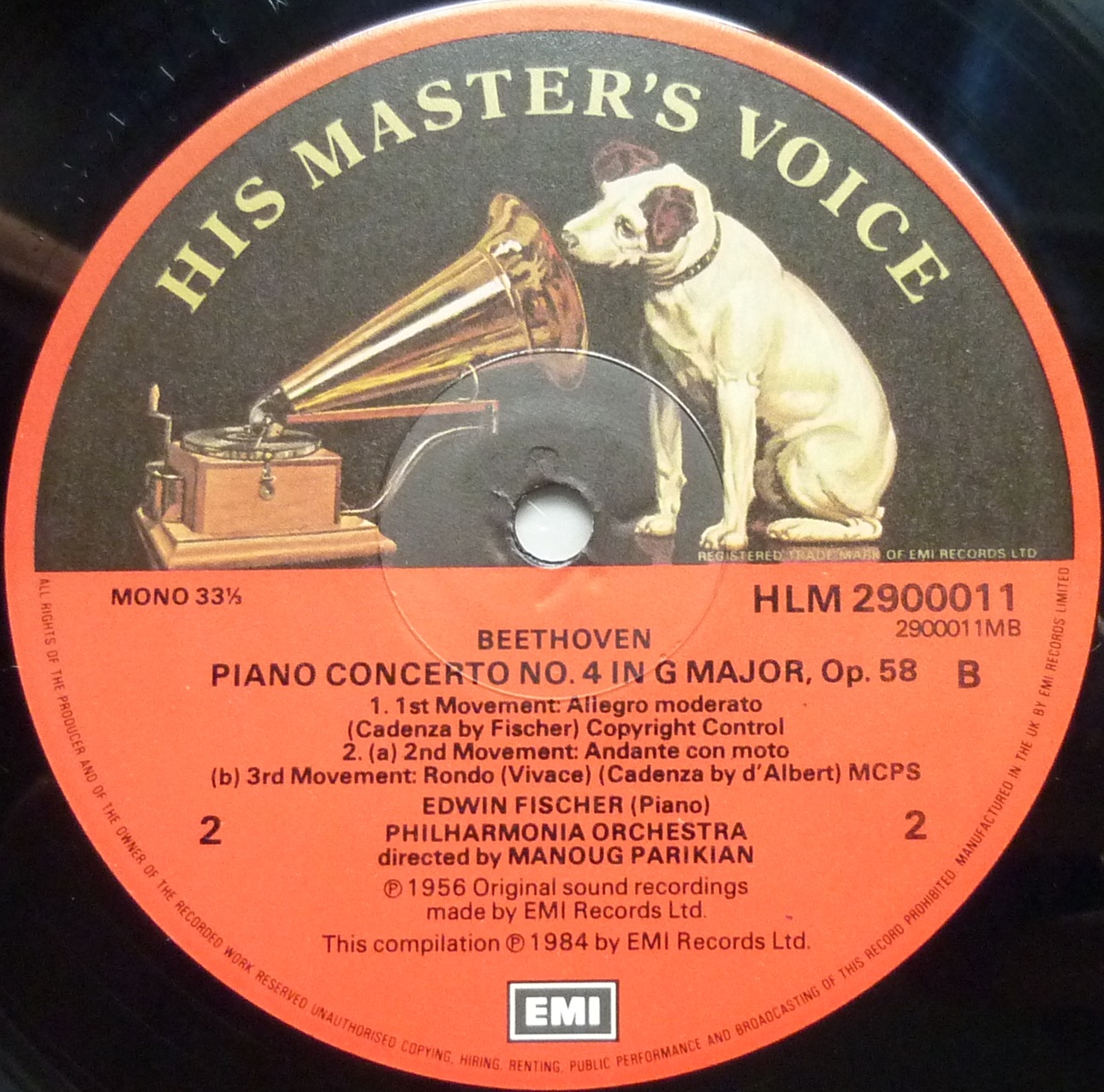
Between 3 and 20 May 1954, Edwin Fischer undertook a major series of recordings in London, including three Concertos with the Philharmonia Orchestra.
That year, due to difficulties that arose with the Swiss musicians, the Luzerner Festwochen Organising Committee had to forego the services of the Swiss Festival Orchestra, and it was announced in January 1954 that it would be the Philharmonia Orchestra that would give all the concerts at the Lucerne Music Festival (article by René Klopfenstein in ‘La Liberté’ of 9 January 1954).
Following this prestigious engagement, the Swiss Ambassador in London, Henry de Torrenté, organised a gala concert of works by Bach and Mozart at Goldsmith’s Hall on 5 May, to which Edwin Fischer and the Philharmonia Orchestra as well as the Swiss violinist Marie-Madeleine Tschachtli were invited in the presence of numerous officials.
And later, on 18 August, Fischer conducted the Philharmonia Orchestra in the Festival’s 5th symphony concert, featuring Bach’s Brandenburg Concerto n°2, Mozart’s Concerto n°22 K.482 and Beethoven’s Triple Concerto Op.56 (with Schneiderhan and Mainardi). Fischer’s masterclass began the day after the concert, with an informal reception hosted by Walter Strebi and Fischer playing the Waldstein Sonata.
In ‘L’Impartial’ of 20 August, music critic Jean-Marie Nussbaum published a long article recounting his experience of one of Fischer’s rehearsals: ‘I’ve just come from a rehearsal of the Edwin Fischer – London Philharmonia Orchestra concert. There’s nothing more pleasant than attending such a work session. The performers, strapped into their formal wear and respectability in the evening, play here in their shirt sleeves, slumped in their chairs in highly unacademic positions. This vast, busty gentleman with a moustache teases his dusty double bass with his handkerchief. In short, you feel at ease…
In the hall, four or five languages, or more. There are an unusual number of musical ‘technicians’. There’s the French cellist Pierre Fournier, supremely distinguished and a masterful player, and his accompanist Reine Gianoli, with hair as flat as the imagination of a Swiss cartoonist. And there are others, of course, whom we don’t know.
Fischer, this great Swiss pianist, is already among his ‘boys’. With his Beethovenian lion’s head poised on the short, stocky body of an Aargau bourgeois, he shakes hands left and right, claps his hands above his head to attract attention, stretches out his arms and… here it is! the prodigious entrance to the Second Brandenburg can be heard, followed by a series of pages (because they don’t play it in its entirety) from this lush, baroque concerto, featuring the violin, flute, oboe, trumpet and harpsichord of the Philharmonia. What a distance between this playing and that of Cortot (who conducted the Brandebourgeois in Paris)! How eighteenth-century, dazzling, free, and Fischer romantic! And how beautiful they both are, though…
We come to a pause: explanations are exchanged half in English, half in German. Fischer runs here and there to scribble a few indications in the scores. A burst of laughter: the good Swiss chef must have made a « witz »… And off we go again. To play one of Mozart’s most beautiful Concertos for piano and orchestra, the one in E, thanks to which, along with the one in D, we had been converted to the Mozartean religion, to which we would never be unfaithful. Fischer plays the piano part and conducts at the same time. The little man leaps from his instrument like a devil from a box to indicate an entrance, an inflection, a tenderness. Then he falls back on the keyboard, and the marvellous reverie begins again…
– Ah! but that pedal… . There is too much pedal, » exclaims a bearded listener behind me, following the music on the score.
– Perhaps you’d like to go and play in his place? » retorts a spectator with glasses who seems to be well informed.
Dear Fischer! Perhaps you don’t conduct your orchestra with Mr Furtwängler’s rigour; you play with him as with your piano; I don’t know. But what I do know is that you have created, and I mean created, an interpretation of Mozart that will never be forgotten.
You thought that music was about emotion, not technique, and you put your magnificent gifts as a performer at the service of your heart: you did well! The quality of your hand when you played this Concerto was equal to that of the greatest artists: those who miraculously combine form and content in a simple, natural style. Is your Mozart romantic? Of course: who ever said he couldn’t be?’
And of course, if for the May 1954 recording sessions, Fischer, as Gerald Kingsley reports, did conduct the orchestra, and if the role of Manoug Parikian, who ‘directed’ the orchestra without conducting it, is not defined, this raises a question. On the other hand, the account of the rehearsal in Lucerne does not show that Manoug Parikian took any part whatsoever in the interpretation of the two works by Bach and Mozart.
The critic of the ‘Neue Zürcher Zeitung’ noted this in the issue of 21 August: ‘Mozart’s Piano Concerto in E flat major K. 482 in particular was not without inaccuracies, because for considerable stretches when Fischer had to play, he could only give his conducting instructions with glances and head movements’.
We don’t know the answer of course, but what we do know, is that it is plausible to assume that, for the May 1954 recordings, it was deemed necessary to call on Parikian’s services with a view to avoiding such inaccuracies.
Avec nos remerciements à Roger Smithson ainsi qu’à Gerald Kingsley, qui était également présent à la répétition de Lucerne / With thanks to Roger Smithson as well as to Gerald Kingsley, who also attended the Lucerne rehearsal.
Les liens de téléchargement sont dans le premier commentaire. The download links are in the first comment

Fischer – Philharmonia Orchestra – Beethoven Concerto n°3 Op. 37
London Kingsway Hall – 7 & 14 mai 1954
Prod: Walter Jellinek & Alec Robertson – Eng: Douglas Larter
Source: Bande/Tape 19 cm/s / 7.5 ips HTB 402
Nous vous avons déjà proposé cet enregistrement à partir de la même source. En voici le lien:
https://concertsarchiveshd.fr/fischer-philharmonia-orchestra-beethoven-concerto-pour-piano-n3-op-37/
La bande étant selon le standard CCIR, il a fallu tenir compte de la différence entre les courbes d’égalisation de la bande (CCIR) et le magnétophone (NAB) sur laquelle elle était lue. A l’époque, cette égalisation n’a pu être faite que de manière approximative et le son obtenu accentuait les duretés de la prise de son, surtout sur l’orchestre. Avec une meilleure égalisation, le son est maintenant plus musical, sans que l’on perde pour autant les détails de l’interprétation.
We have already offered you this recording from the same source. Here is the link:
https://concertsarchiveshd.fr/fischer-philharmonia-orchestra-beethoven-concerto-pour-piano-n3-op-37/
As the tape was in the CCIR standard, it was necessary to take into account the difference between the equalisation curves of the tape (CCIR) and of the tape recorder (NAB) on which it was played. At the time, this equalisation could only be done approximately and the sound obtained accentuated the harshness of the recording, especially on the orchestra. With better equalisation, the sound is now more musical, without losing any of the details of the performance.
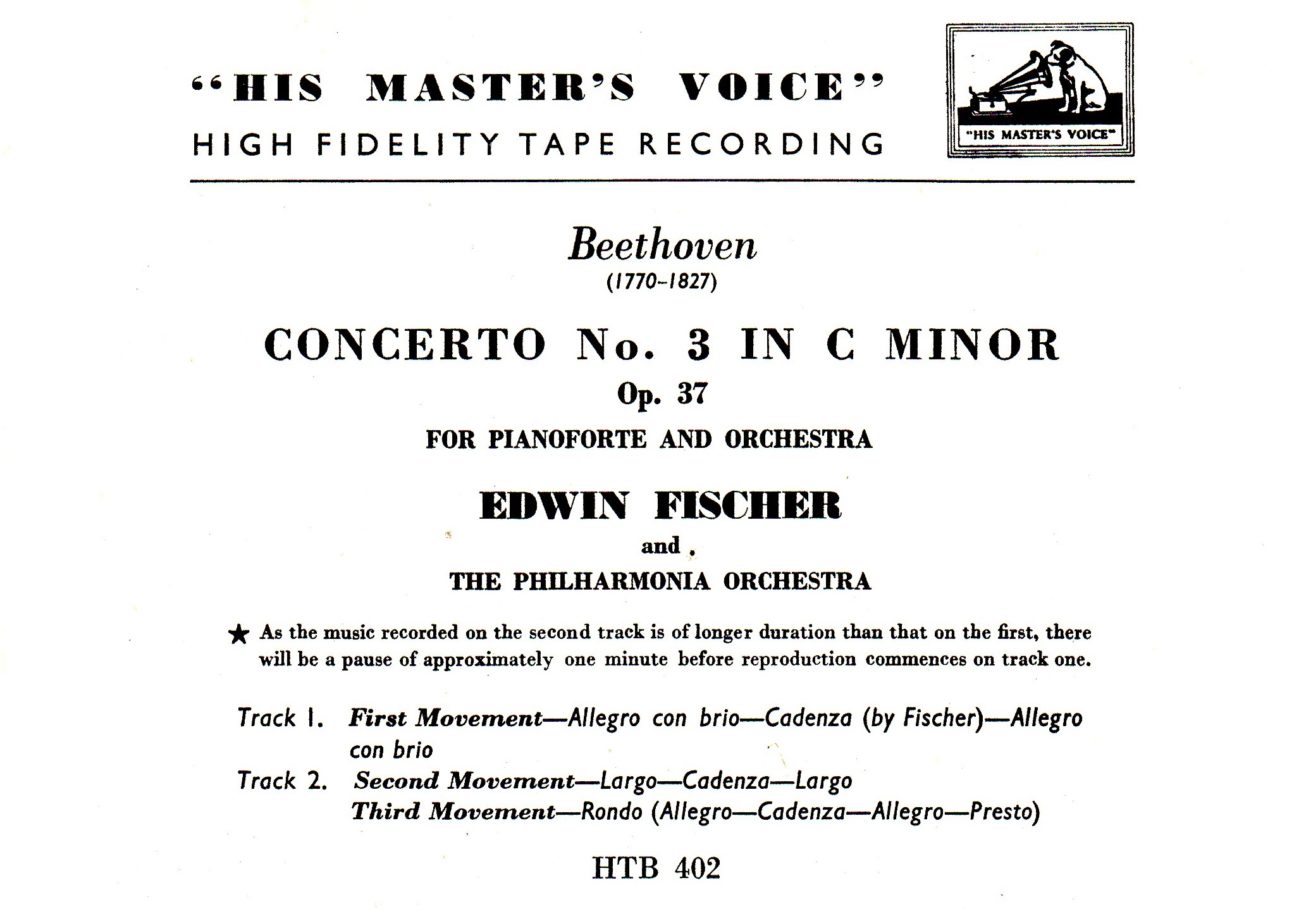
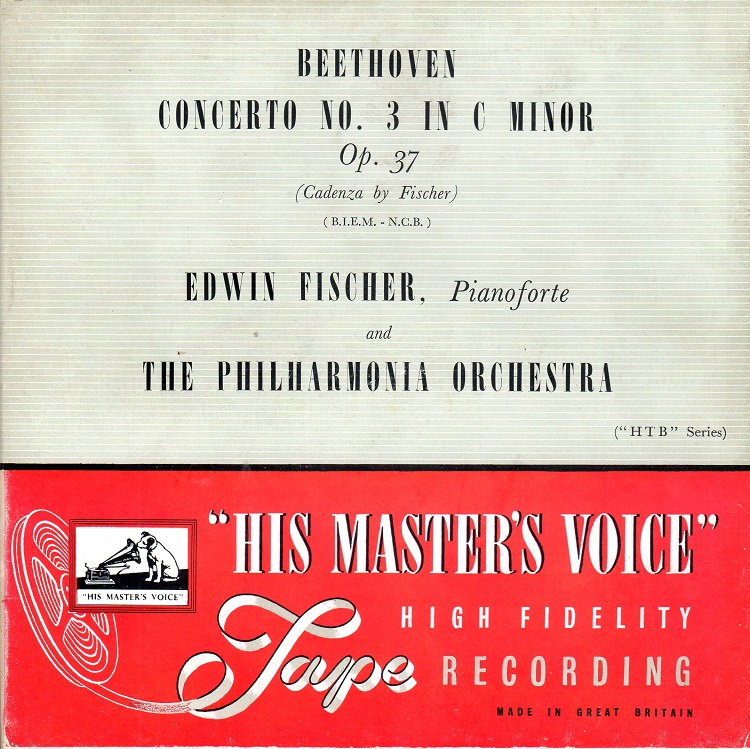
Les liens de téléchargement sont dans le premier commentaire. The download links are in the first comment
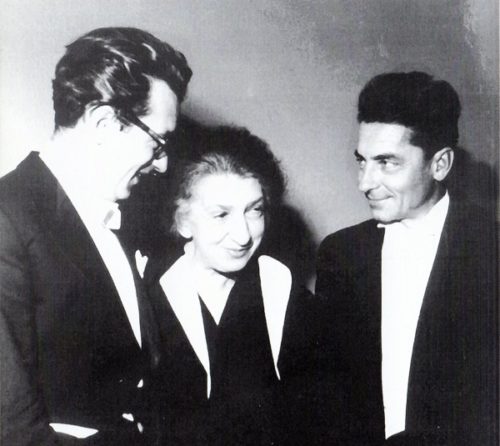
Mozart: Concerto n°10 K.365
Clara Haskil & Géza Anda – Philharmonia Orchestra Alceo Galliera
London Abbey Road Studio n°1 – 24-26 April 1956
Source Bande/Tape Columbia BTA109: 2 pistes/19 cm/s / 2 tracks 7.5 ips STEREO
Clara Haskil (1895-1960) a joué en duo avec Géza Anda à partir de 1954, mais ce n’est pas le premier pianiste avec lequel elle a formé un duo, ni celui avec lequel elle a joué le plus d’œuvres. En effet, en 1938-39, elle joué plusieurs fois avec Dinu Lipatti, et on trouve trace dans la presse suisse de concerts donnés à Vevey en 1944-45 avec Nikita Magaloff avec au programme, le 5 décembre 1944 sous la direction de Pierre Colombo, les deux Concertos qu’elle rejouera plus tard avec Anda (Bach: Concerto en ut majeur BWV1061 et Mozart: Concerto n°10 en mi bémol majeur K. 365), mais aussi, le 11 novembre 1945, la Sonate en ré majeur K.448 de Mozart, les Variations sur un thème de Haydn de Brahms, le Duettino Concertante de Busoni d’après Mozart, et enfin, après l’entracte et en ‘première audition’, la Sonate pour deux pianos et percussions de Bartók (sous la direction de Pierre Colombo avec Charles Peschier et Willy Blaser), dont le Finale a été bissé.
En 1958, Clara Haskil a commencé à s’entretenir avec Rita Wolfensberger, elle-même pianiste, en vue de la rédaction de ses mémoires. Le livre, écrit en allemand, est paru en 1961 (Alfred Scherz Verlag). Il est probablement le meilleur qui ait été écrit sur la pianiste, et il est dommage qu’il n’ait jamais été traduit. Il permet notamment de découvrir la véritable personnalité de Clara Haskil qui a été souvent présentée sous une forme stéréotypée par la presse musicale. Le récit de la rencontre avec Géza Anda est particulièrement révélateur:
‘En octobre 1953, Rolf Liebermann, alors directeur du département d’orchestre de la radio zurichoise, demanda à Clara Haskil de jouer la partie solo du Double Concerto de Mozart avec le jeune Hongrois Géza Anda (1921-1976), et c’est ainsi que se rencontrèrent deux pianistes de nature étrangement proche dans leur interprétation de Mozart. Le jeu de Clara était clair, perlé, celui d’Anda plus voilé, plus velouté; le rythme plus fluide, plus sinueux avec Haskil, celui d’Anda plus clairement accentué – mais le sens des nuances, l’amour de l’art raffiné, la capacité de créer de main de maître des ombres dans un cadre très étroit, tout cela était commun aux deux. Cette première collaboration a immédiatement entraîné d’autres engagements à deux, et un disque avec l’enregistrement de cette même œuvre et d’un Double Concerto de Bach sous la direction d’Alceo Galliera est sorti peu de temps après. Plusieurs Festivals se sont assurés la collaboration de ce magnifique duo; Keilberth, Karajan, Paumgartner et d’autres maîtres de la direction d’orchestre ont contribué à des performances artistiques de haut niveau.
Mais pour Clara, Géza Anda était bien plus qu’un fabuleux partenaire. Lui et son épouse pétillante devinrent des amis particulièrement précieux pour elle, et surtout pour leur nature extrêmement positive, optimiste et joyeuse. La jeunesse du tempérament de l’épouse de Géza était très précieuse pour Clara, tout comme elle se sentait toujours à l’aise et enjouée au contact des jeunes. Comme son dernier partenaire de violon Arthur Grumiaux (1921-1986), Anda avait plus de vingt-cinq ans de moins qu’elle. Lui et sa femme savaient parfaitement comment égayer leur amie plus âgée, mais restée jeune et naïve dans son cœur comme un enfant, et parfois aussi comment l’encourager et la pousser à toutes sortes d’imprévus. Si elle réagissait à tout moment aux plaisanteries avec un grand sens de l’humour, ce n’était pas seulement grâce à son heureuse capacité à entrer immédiatement dans n’importe quel jeu, mais aussi et surtout grâce au charme irrésistible avec lequel l’aimable et espiègle Anda pouvait proposer les idées les plus originales. Les deux artistes étaient très attachés l’un à l’autre, et le sourire qui planait sur leur relation d’amis et de collègues éclairait une profonde gravité humaine’.
Qu’il est dommage que le répertoire du duo Haskil-Anda soit resté limité à deux œuvres concertantes!
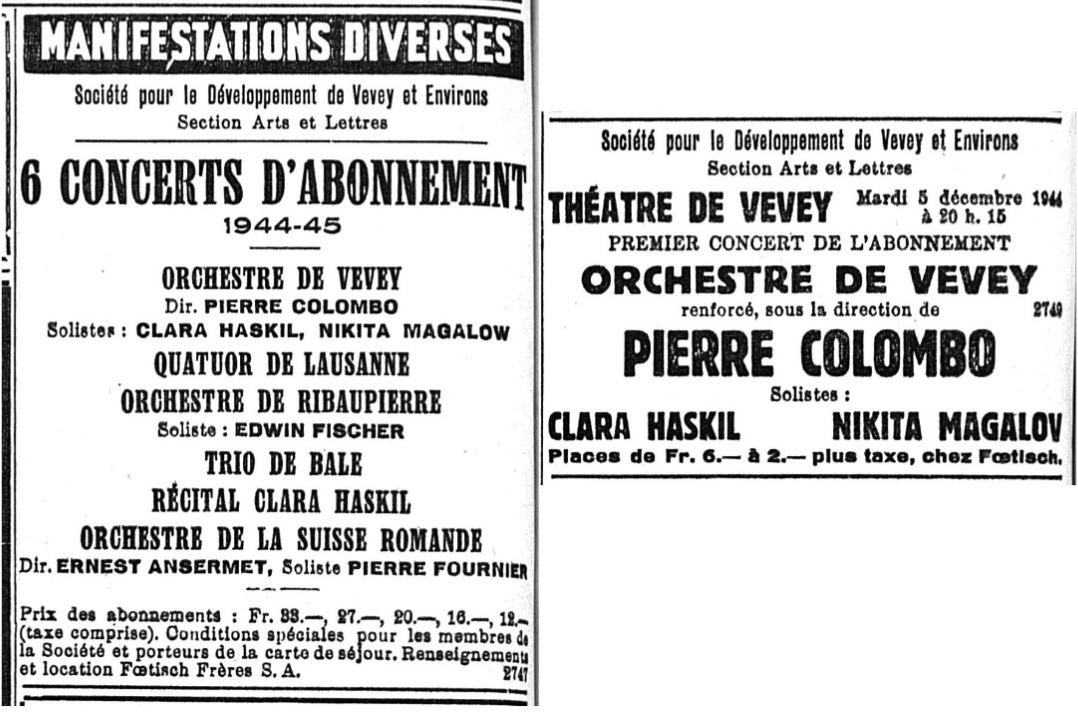
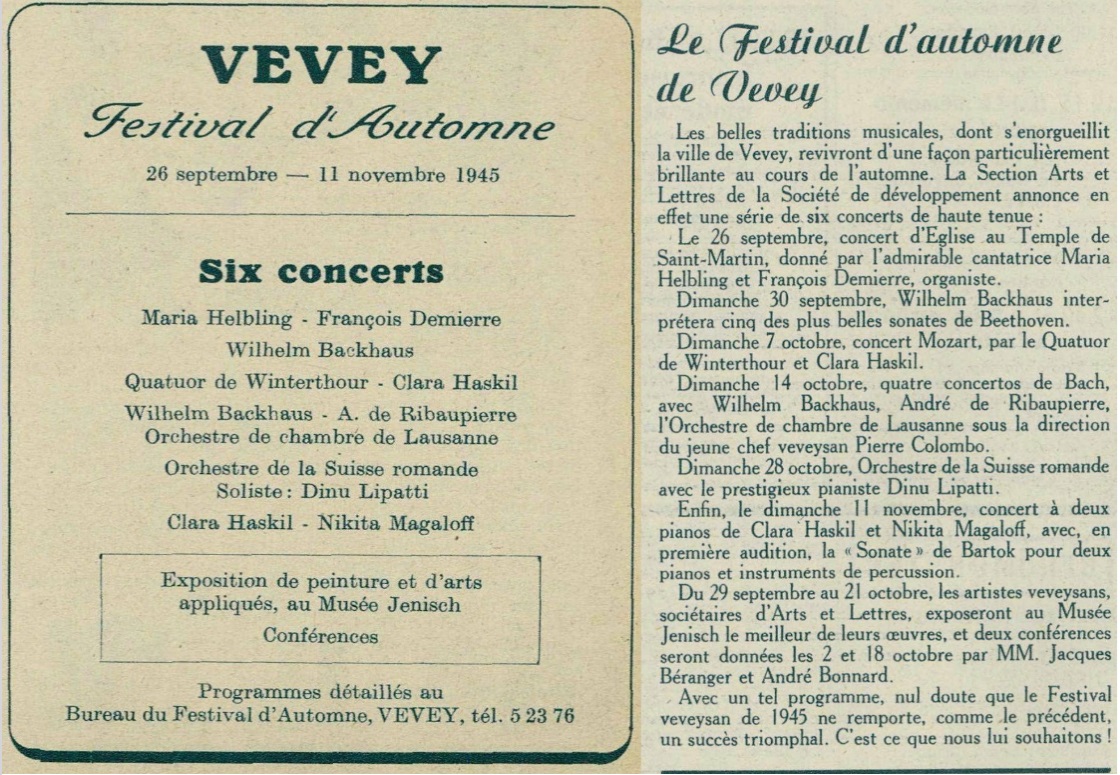
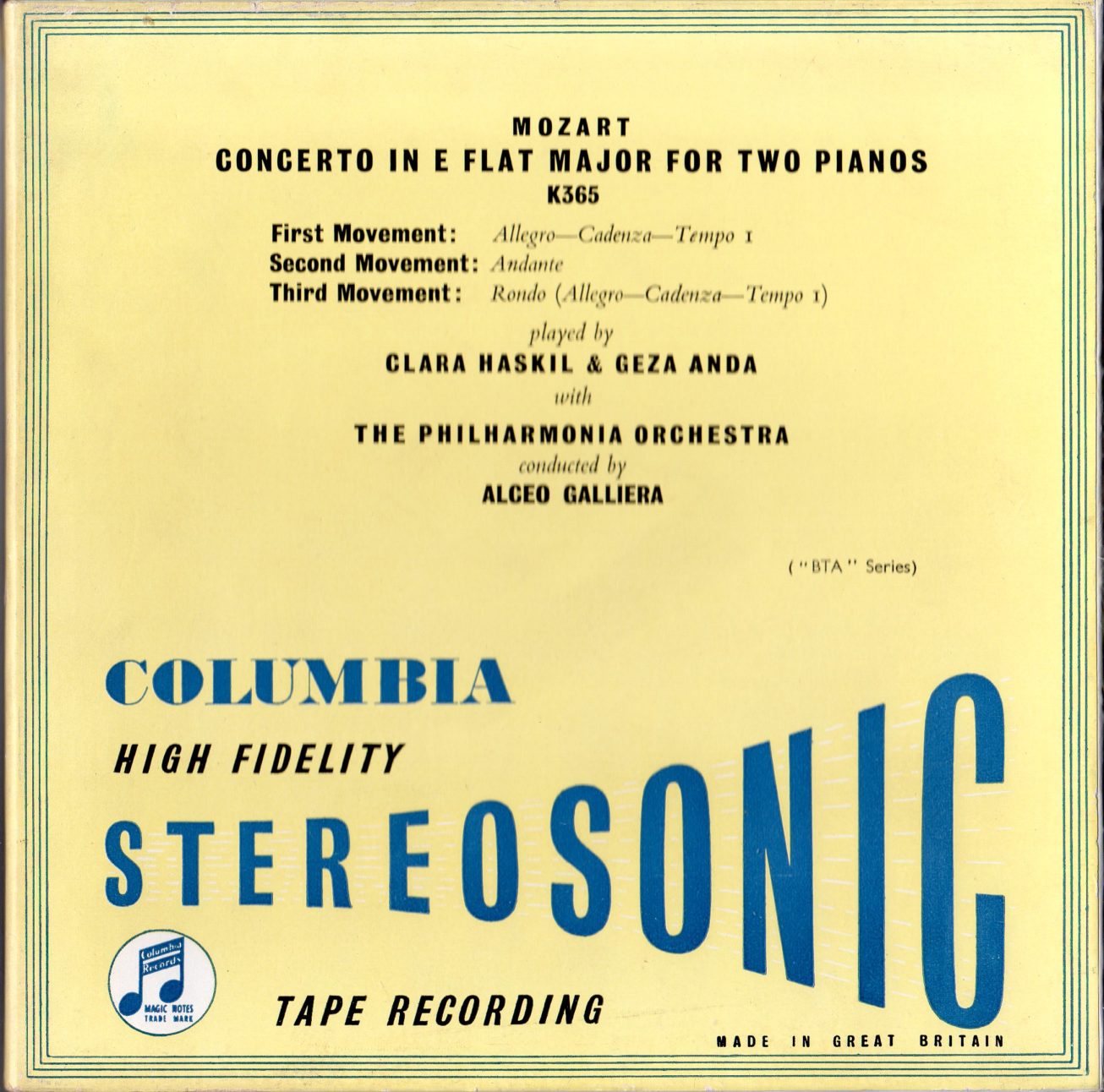
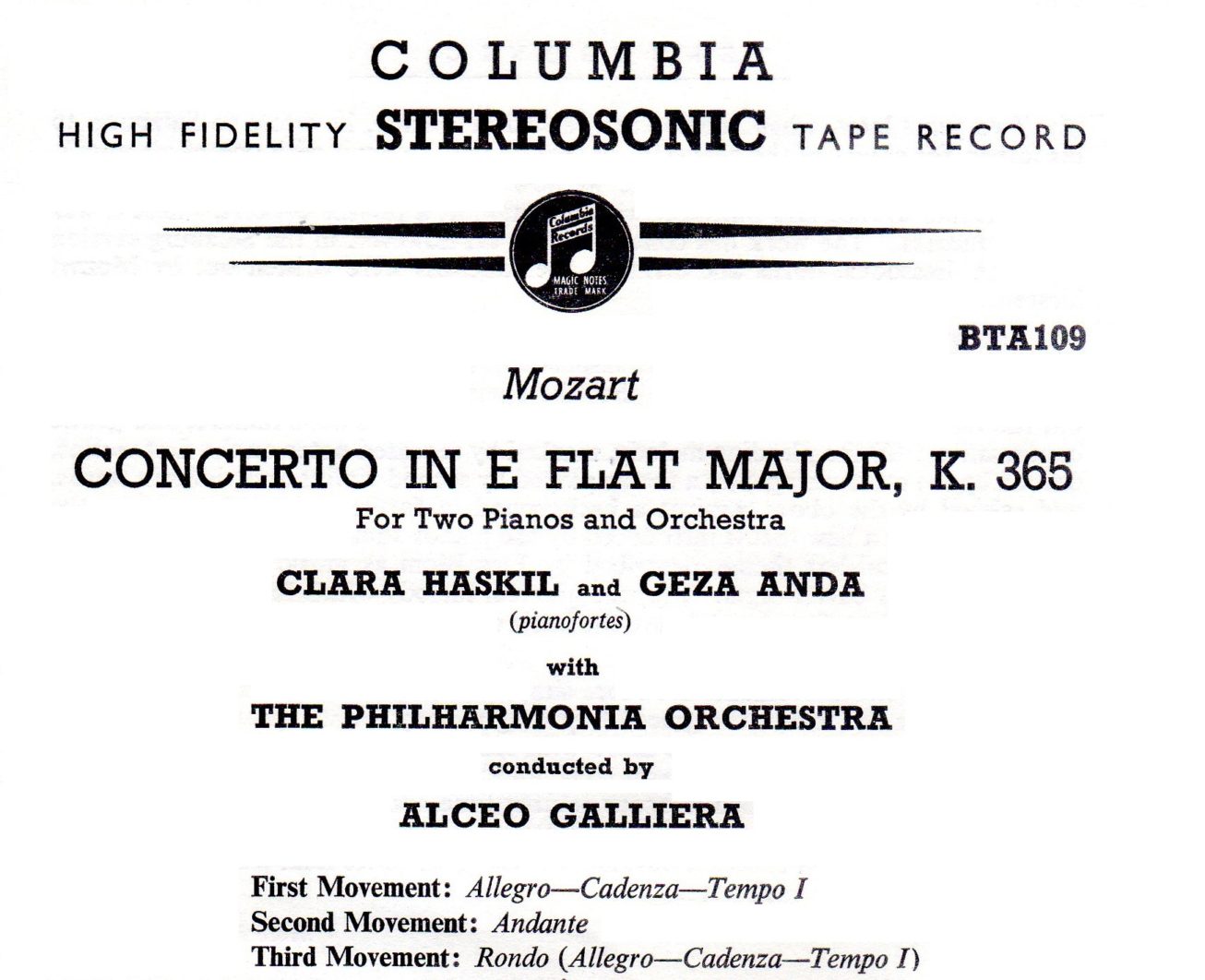
Clara Haskil (1895-1960) played together with Géza Anda from 1954, but he was not the first pianist with whom she formed a duo, nor the one with whom she played the most works. In fact, in 1938-39, she played several times with Dinu Lipatti, and the Swiss press records concerts given in Vevey in 1944-45 with Nikita Magaloff. On 5 December 1944, conducted by Pierre Colombo, the programme included the two Concertos she would later play with Anda (Bach: Concerto in C major BWV1061 and Mozart: Concerto No. 10 in E flat major K. 365), but also, on 11 November 1945, Mozart’s Sonata in D major K.448, Brahms’ Variations on a Theme by Haydn, Busoni’s Duettino Concertante after Mozart, and finally, after the interval and as a ‘first performance’, Bartók’s Sonata for Two Pianos and Percussion (conducted by Pierre Colombo with Charles Peschier and Willy Blaser), the Finale of which was encored.
In 1958, Clara Haskil started meeting Rita Wolfensberger, herself a pianist, with a view to writing her memoirs. The book, written in German, was published in 1961 (Alfred Scherz Verlag). It is probably the best ever written about the pianist, and it is a shame that it has never been translated. In particular, it reveals Clara Haskil’s true personality, which has often been presented in stereotyped form by the music press. The account of her meeting with Géza Anda is particularly relevant:
‘In October 1953, the then head of the orchestra department at Zurich Radio, Rolf Liebermann, asked Clara Haskil, together with the young Hungarian Géza Anda (1921-1976), to take on the solo part for a performance of Mozart’s Double Concerto, and thus two pianists met who were strangely close in their interpretation of Mozart. Each pianist’s playing was unmistakably characteristic: Clara’s touch was bright and sparkling, Anda’s more veiled and velvety; her rhythm more flowing and sinuous, Anda’s more clearly accentuated – but both shared a sense of nuance, a love of the fine art, the ability to shade masterfully within a very narrow framework. This first collaboration immediately led to further engagements as a duo, and a disc with a recording of this very work and of a Double Concerto by Bach under Alceo Galliera was released shortly afterwards. Festival venues secured the marvellous duo; Keilberth, Karajan, Paumgartner and other masters of conducting contributed to high level artistic performances.
For Clara, however, Géza Anda was more than just a marvellous partner. He and his cheerful wife became particularly precious friends to her, especially because of their extremely positive, optimistic and cheerful nature. The youthfulness of her temperament was a powerful attraction for Clara, just as she always felt at ease and exhilarated when socialising with young people. Like her last violin partner Arthur Grumiaux (1921-1986), Anda was more than twenty-five years her junior. He and his wife knew perfectky well how to cheer up their older friend, who remained as youthful and naïve at heart as a child, sometimes encouraging her and inspiring her to do all sorts of unexpected things. The fact that she always responded to jokes with a golden sense of humour was not only due to her fortunate ability to respond immediately to any play, but also primarily to the irresistible charm with which the lovable rogue Anda could come up with the most original ideas. Both artists were very close to each other, and the smiles that lay over their relationship as friends and colleagues masked a deep human seriousness’.
We can only regret that the duo’s repertoire remained limited to two Concertos!
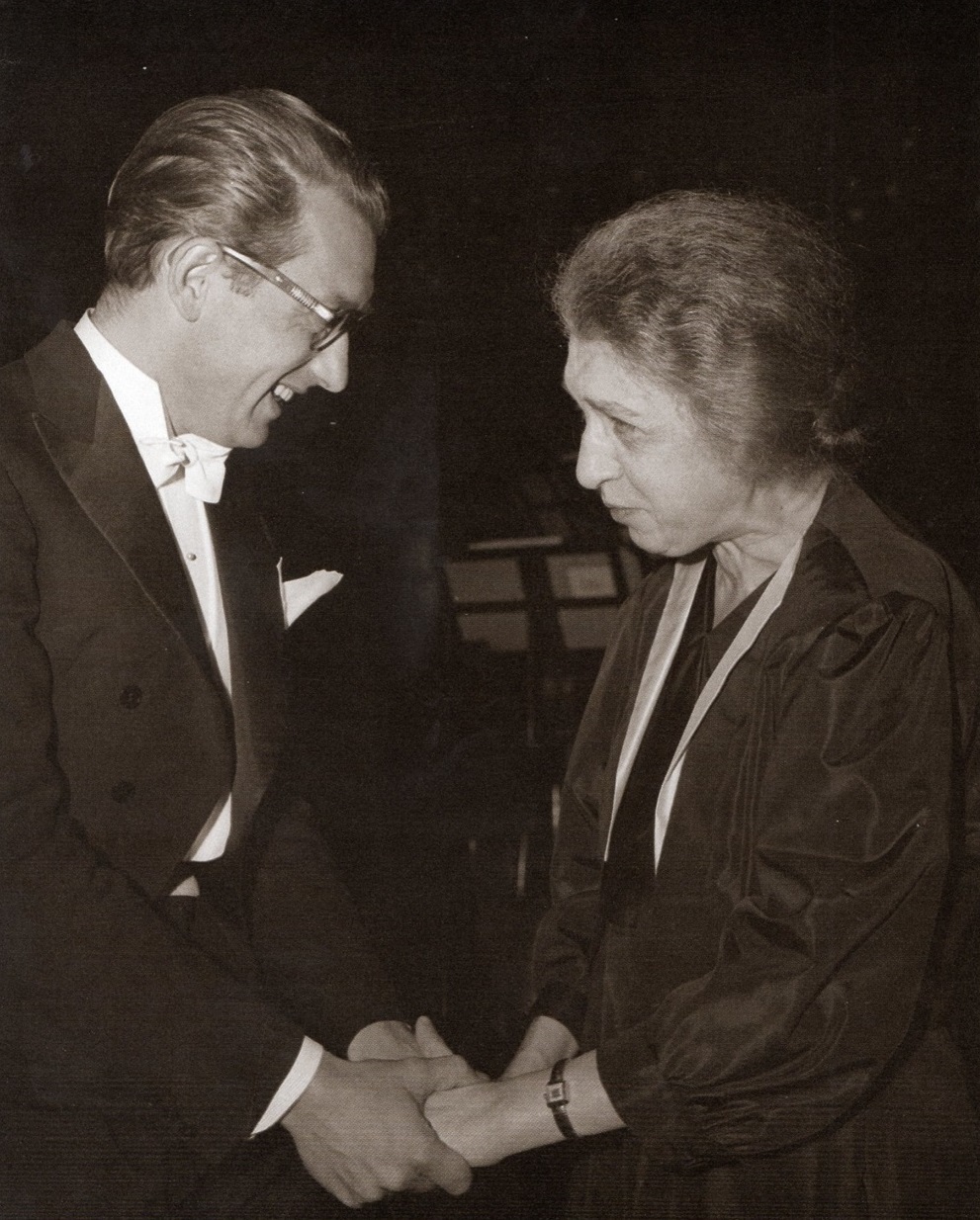
Anda & Haskil Luzern
Les liens de téléchargement sont dans le premier commentaire. The download links are in the first comment
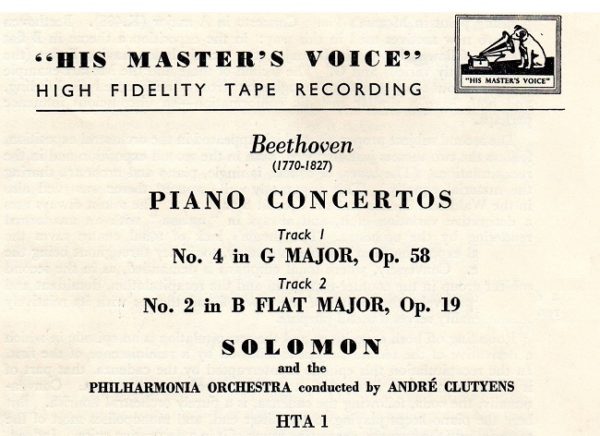
Solomon – Philharmonia Orchestra André Cluytens
London Kingsway Hall
Concerto n°2 Op.19: 3,5 & 6 November 1952
Concerto n°4 Op.58: 3-5 November 1952
Source: Bande / Tape HTA 1 ( 2 pistes 19 cm/s / 2 tracks 7.5 ips)
En septembre 1954, His Master’s Voice (HMV) a publié sa première liste commerciale de bandes pré-enregistrées qui étaient copiées sur les mêmes magnétophones que ceux utilisés par les studios, en utilisant le même type de bandes que lors des séances d’enregistrements. La qualité obtenue reste étonnante, même si la vitesse (19 cm/s) n’est que le quart de celle qui était mise en œuvre (76 cm/s) lors des enregistrements, et le seul inconvénient est un léger souffle de bande.
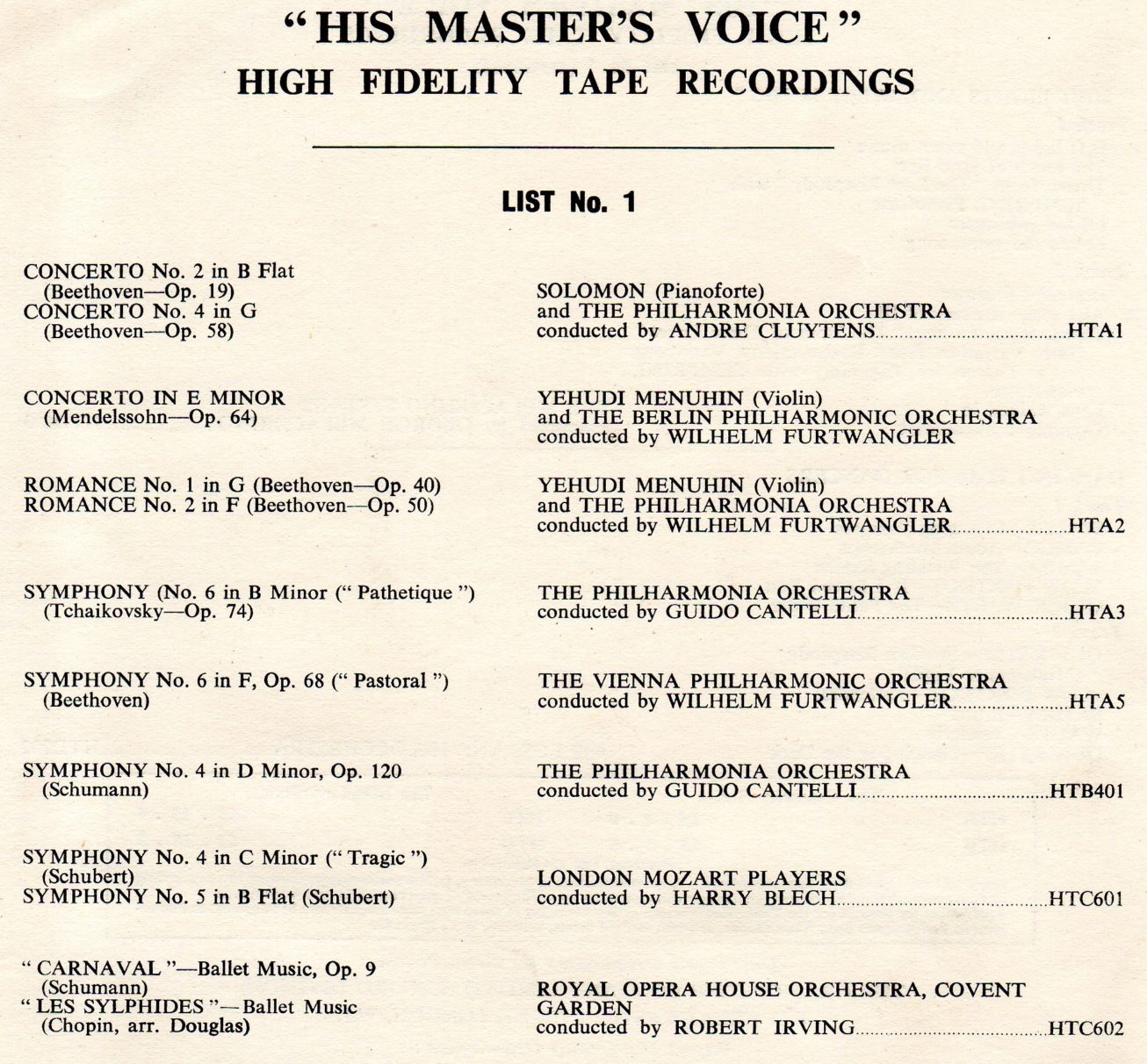
Pour la toute première de la série, référencée HTA 1, HMV a choisi ces deux concertos de Beethoven interprétés par Solomon et Cluytens, deux réalisations magnifiques où les deux musiciens ont accordé leurs conceptions à la perfection. La prise de son, très équilibrée et d’une ampleur très agréable, reflète bien l’acoustique chaleureuse de Kingsway Hall. La bande, qui date donc de 1954, est en très bon état, sauf de temps en temps (dans le concerto n°4) quelques bruits ‘électriques’ qui proviennent probablement de parasites électriques lors de la copie de la bande.
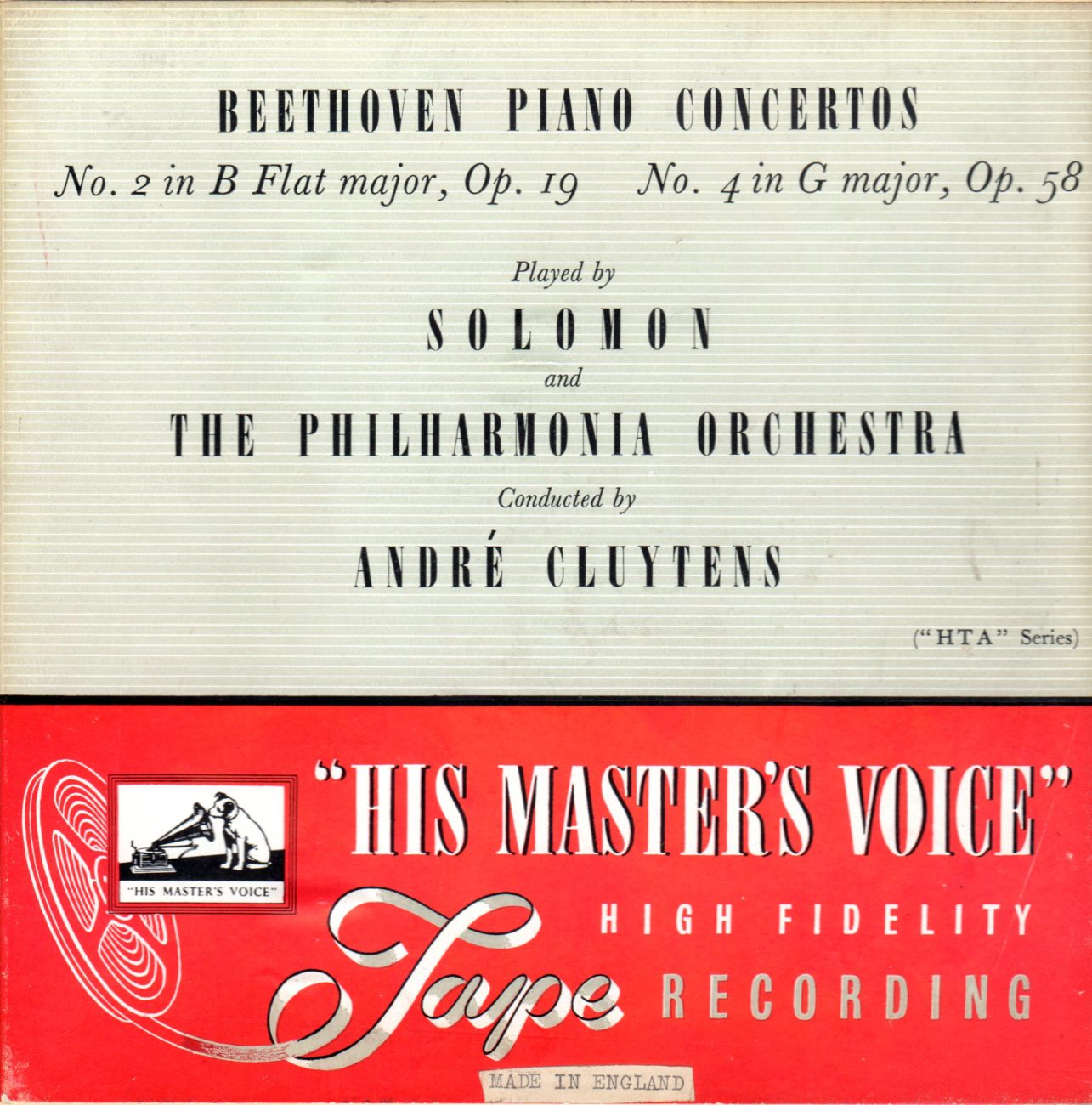
In September 1954, His Master’s Voice (HMV) published its first commercial list of pre-recorded tapes that were dubbed onto the same tape recorders used by the studios, and using the same tapes as during the recording sessions. The quality obtained is still amazing, even if the speed (19 cm/s) is only a quarter of the speed that was used (76 cm/s) during the recordings, and the only drawback is a slight tape hiss.
For the very first of the series, referenced HTA 1, HMV chose these two Beethoven concertos performed by Solomon and Cluytens, two magnificent interpretations in which the two musicians matched their views to perfection. The sound recording, very balanced and with a very pleasant fullness, reflects well the warm acoustics of Kingsway Hall. The tape, which dates from 1954, is in very good condition, except for occasional ‘electrical’ noises (in Concerto No. 4), which were probably due to electrical interferences when the tape was dubbed.
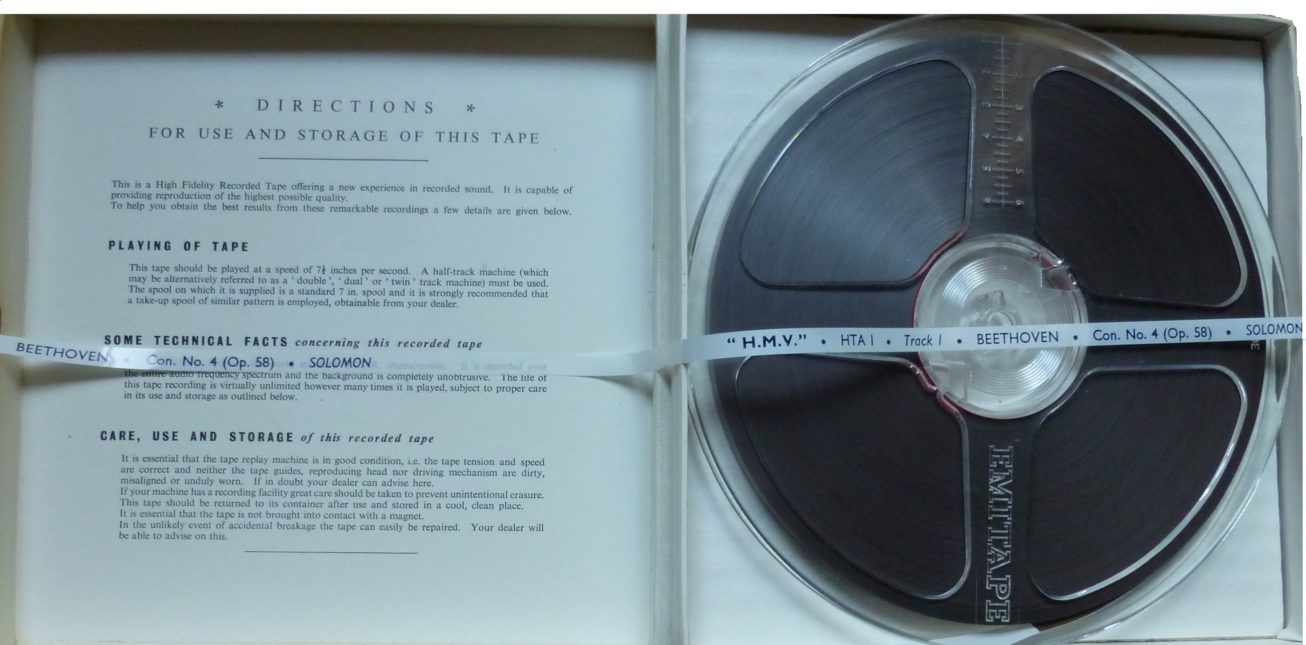
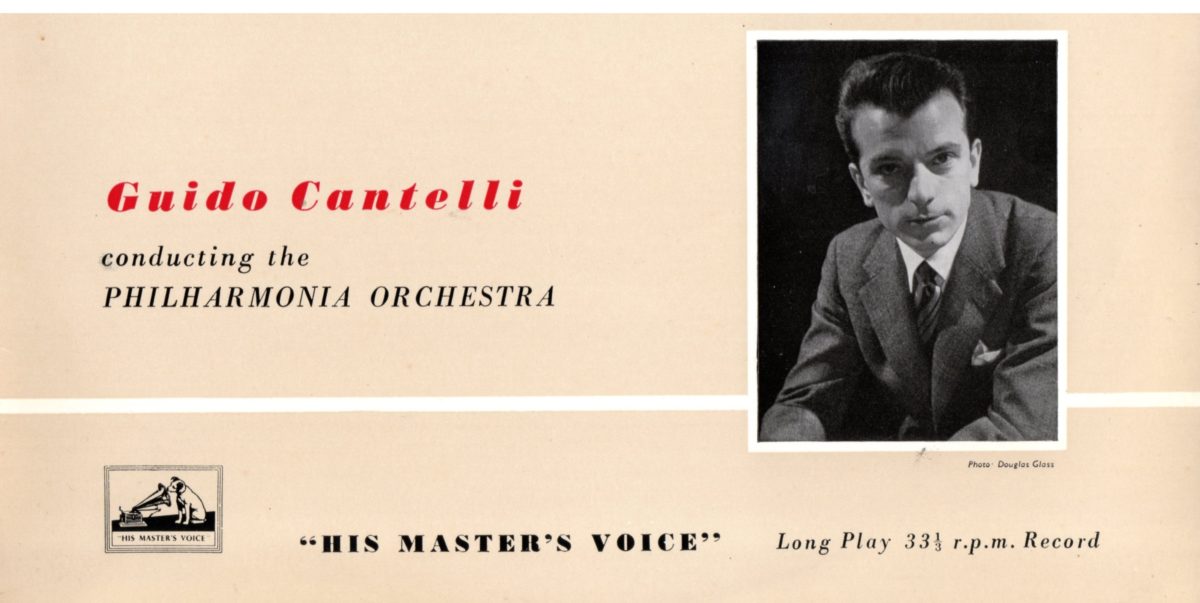
NBC SO Carnegie Hall – 15 December 1951 (Bande/Tape)
_________
Philharmonia Orchestra – 8, 9, 12, 16 &18 August 1955 (GHLP 1004-Mono)
La Troisième Symphonie est réputée comme étant la Symphonie de Brahms la plus difficile à interpréter. Si des chefs comme Walter ou Furtwängler ont signé des versions considérées comme des références, elle a posé beaucoup de problèmes même à de grands brahmsiens, à commencer par Toscanini qui, dans ses témoignages enregistrés, ne l’a vraiment réussie qu’avec le Philharmonia Orchestra, en concert à Londres au Royal Festival Hall en 1952.
C’était par contre une des grandes interprétations de Guido Cantelli qui en a laissé trois témoignages enregistrés (NBC SO, Boston SO, Philharmonia Orchestra).
L’enregistrement réalisé pour HMV/EMI à Kingsway Hall en 1955 a été capté à la fois en monophonie et en stéréophonie expérimentale. A cet effet , il y avait deux équipes de prises de son. L’enregistrement stéréophonique n’a été publié qu’en 1978, et depuis, c’est cette seule version qui est rééditée. Toutefois, en comparant ces deux captations, on constate qu’avec l’étalement en largeur de l’orchestre procuré par la stéréo, la réverbération de Kingsway Hall tend à diluer les timbres et à lisser les phrasés, alors que la prise de son mono, bénéficiant d’un judicieux placement microphonique qui permet à l’acoustique ample de la salle de porter pleinement le son de l’orchestre, est bien mieux définie: l’interprétation sonne de manière nettement plus vivante, et les timbres et les détails du phrasé sont mieux restitués. Avec la version mono, on est aussi musicalement plus proche de la version enregistrée en concert avec le NBC SO.
Le tableau des minutages ci-dessous montre qu’en studio avec le Philharmonia, et comme c’était en général le cas avec Cantelli, les tempi sont plus larges. Il montre aussi qu’en concert, Cantelli faisait la reprise (environ 3′) dans le premier mouvement, mais que cette reprise est malheureusement omise dans l’enregistrement commercial avec le Philharmonia.
Minutages/Timings:
NBC SO 15 Dec. 1951 (12’23; 7’57; 5’35; 8’06)
Boston SO 25 Dec. 1954 (12’28; 7’58; 5’45; 8’02)
NYPO 20 Jan. 1955 (12’40; 7’45; 5’40; 8’10)
Philharmonia Orch Aug. 1955 (9’57; 8’43; 6’18; 8’25)
[Philharmonia Orch Toscanini 1 Oct 1952 (12’27; 8’31; 6’17; 8’34)]
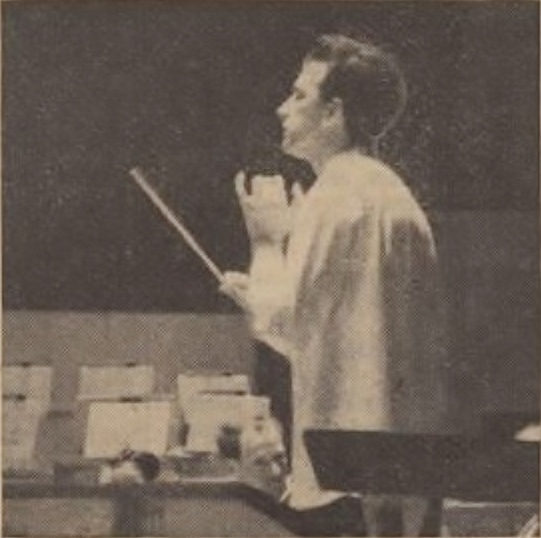
Cantelli Philharmonia Edinburgh
Among the Brahms Symphonies, the Third Symphony is considered as being the most difficult to perform. If conductors like Walter or Furtwängler have made recordings considered as references, it proved problematic even for great Brahms conductors, and for Toscanini to start with, who in his recorded testimonies was only successful with his 1952 London concert in Royal Festival Hall with the Philharmonia Orchestra.
On the other hand, it was one of the great performances of Guido Cantelli who left three recordings (NBC SO, Boston SO, Philharmonia Orchestra).
The 1955 recording for HMV/EMI in Kingsway Hall was made both in mono and in experimental stereo. For this purpose, there where two recording teams. The stereophonic version was published only in 1978, and since then, is the only one to be re-issued. However a comparison between both reveals that, because of the Kingsway Hall reverberation, the spreading in width of the orchestra brought by stereophony goes with a lower definition of the timbres and a smoothing of the phrasings, whereas the mono version, because of a well chosen microphone placement that allows the warm hall acoustics to bring a full-blooded orchestral sound, has much more definition: the performance sounds much more alive, and the timbres and the details of phrasing are better reproduced. With the mono version, we are also musically closer to the concert performance recorded with the NBC SO.
The timings (see above) show that in studio with the Philharmonia, and as was generally the case with Cantelli, the tempi are broader. They also show that, in live performances, Cantelli made the first movement repeat (about 3′), but that this repeat was omitted in the commercial recording with the Philharmonia.
